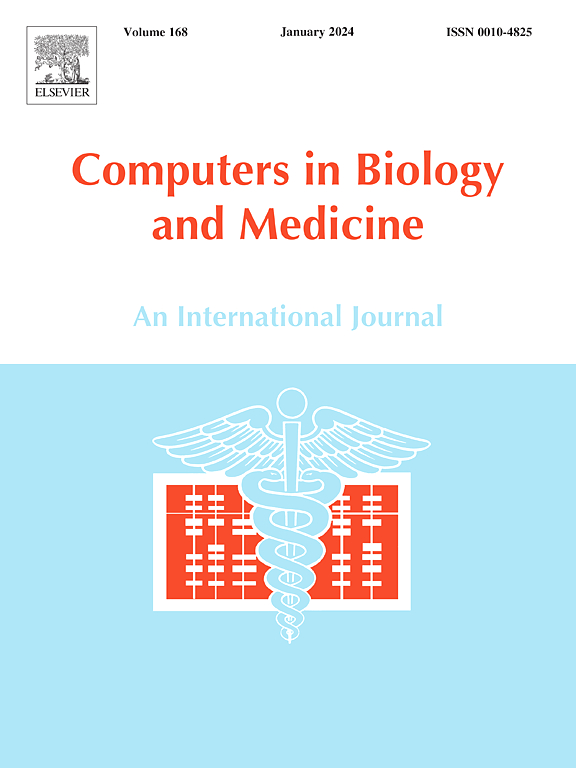利用小脑脑电图和机器学习技术增强自动睡眠阶段分类。
IF 6.3
2区 医学
Q1 BIOLOGY
引用次数: 0
摘要
睡眠障碍已成为现代社会一个重要的健康问题。为了调查和诊断睡眠障碍,睡眠分析已经成为主要的研究方法。传统的多导睡眠图主要依靠脑电图(EEG)和肌电图(EMG)进行睡眠阶段评分,但人工评分耗时且主观。本研究探讨了小脑脑电结合机器学习在睡眠阶段自动分类中的潜在应用。对25只雄性小鼠进行24 h脑电/小脑电/肌电图记录,并进行人工睡眠分期。不同的机器学习模型,包括光梯度增强(LGBoost)、极端梯度增强、分类增强、支持向量机、逻辑回归、随机森林、长短期记忆和卷积神经网络,被用于自动睡眠阶段分类。比较不同模型在不同训练与测试集比例下的表现,以及小脑电、脑电和肌电的效果。小脑脑电图在清醒、非快速眼动睡眠阶段和快速眼动睡眠阶段的功率谱密度表现出显著差异,特别是在bb0 ~ 7hz频率下。LGBoost、Extreme Gradient Boosting和Categorical Boosting模型表现出相当的性能,由于LGBoost的计算时间更短,因此选择LGBoost进行进一步的分析。在所有训练:测试集比率中,大脑脑电图在分类睡眠阶段方面始终显示出最高的准确性、召回/灵敏度和特异性,其次是小脑脑电图,其表现优于肌电图。将前5个小脑脑电特征与脑电特征相结合的分类效果优于将肌电特征与脑电特征相结合的分类效果。利用前20个特征,该模型在清醒、非快速眼动睡眠阶段和快速眼动睡眠阶段的受试者工作特征曲线下的平均面积分别为0.98±0.08、0.98±0.10和0.99±0.07。小脑可能在睡眠-觉醒调节中起着独特而重要的作用。将小脑脑电图与多导睡眠图相结合,有可能提高睡眠阶段分类的准确性和效率。本文章由计算机程序翻译,如有差异,请以英文原文为准。

Enhancing automatic sleep stage classification with cerebellar EEG and machine learning techniques
Sleep disorders have become a significant health concern in modern society. To investigate and diagnose sleep disorders, sleep analysis has emerged as the primary research method. Conventional polysomnography primarily relies on cerebral electroencephalography (EEG) and electromyography (EMG) for sleep stage scoring, but manual scoring is time-consuming and subjective. This study investigated the potential application of cerebellar EEG combined with machine learning in automatic sleep stage classification. Twenty-five male mice underwent 24-h cerebral EEG/cerebellar EEG/EMG recording, and manual sleep staging was performed. Various machine learning models, including Light Gradient Boosting (LGBoost), Extreme Gradient Boosting, Categorical Boosting, Support Vector Machine, Logistic Regression, Random Forest, Long Short-Term Memory and Convolutional Neural Network, were applied for automatic sleep stage classification. The performance of different models and the efficacy of cerebellar EEG, cerebral EEG, and EMG were compared under different training:test set ratios. Cerebellar EEG exhibited significant differences in power spectral density across wakefulness, non-rapid eye movement sleep stages, and rapid eye movement sleep stages, particularly at frequencies >7 Hz. LGBoost, Extreme Gradient Boosting, and Categorical Boosting models showed comparable performance, with LGBoost being selected for further analyses due to its shorter computation time. Cerebral EEG consistently demonstrated the highest precision, recall/sensitivity, and specificity in classifying sleep stages across all training:test set ratios, followed by cerebellar EEG, which outperformed EMG. Combining the top 5 cerebellar EEG features with cerebral EEG features yielded better classification performance than combining EMG features with cerebral EEG features. Using the top 20 features, the model achieved mean area under the receiver operating characteristic curve values of 0.98 ± 0.08, 0.98 ± 0.10, and 0.99 ± 0.07 for wakefulness, non-rapid eye movement sleep stages, and rapid eye movement sleep stages, respectively. The cerebellum may play a unique and important role in sleep-wake regulation. Incorporating cerebellar EEG into polysomnography has the potential to enhance the accuracy and efficiency of sleep stage classification.
求助全文
通过发布文献求助,成功后即可免费获取论文全文。
去求助
来源期刊

Computers in biology and medicine
工程技术-工程:生物医学
CiteScore
11.70
自引率
10.40%
发文量
1086
审稿时长
74 days
期刊介绍:
Computers in Biology and Medicine is an international forum for sharing groundbreaking advancements in the use of computers in bioscience and medicine. This journal serves as a medium for communicating essential research, instruction, ideas, and information regarding the rapidly evolving field of computer applications in these domains. By encouraging the exchange of knowledge, we aim to facilitate progress and innovation in the utilization of computers in biology and medicine.
 求助内容:
求助内容: 应助结果提醒方式:
应助结果提醒方式:


